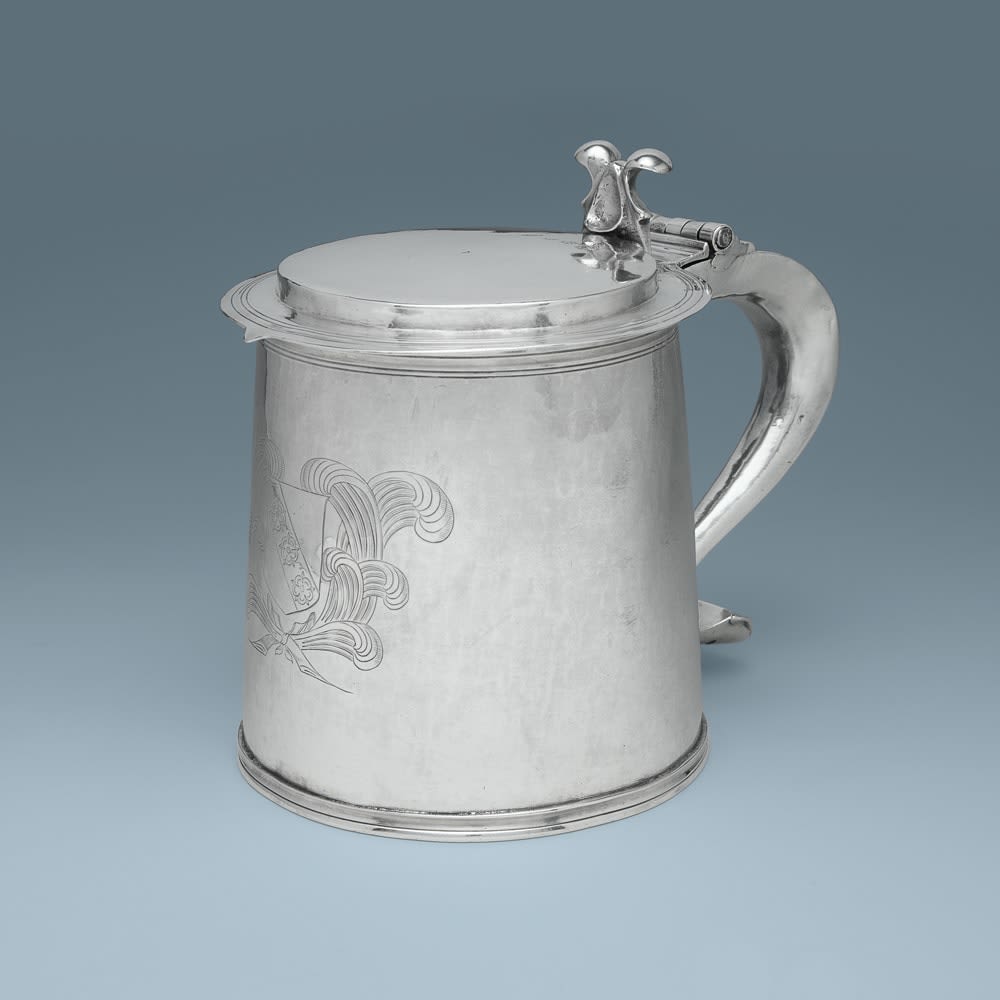

Strickland. Osmond
A Charles II Antique English Silver Tankard, 1671
Height: 6.75 in.
Weight: 27 oz. 10 dwt.
London
H0373
Sold
Of tapering cylindrical form with ’S’ scroll handle rising to a cast bifurcated scroll thumbpiece, the front engraved with a coat of ams. Fully hallmarked on body and cover, the...
Of tapering cylindrical form with ’S’ scroll handle rising to a cast bifurcated scroll thumbpiece, the front engraved with a coat of ams. Fully hallmarked on body and cover, the maker’s mark is struck on the lid and body and also at the top of the handle underneath the hinged lid. In addition there is a different maker’s mark struck once half way down the front panel of the handle.
The arms are probably those of Carey.
Provenance:
Bulgari, Rome, May 28, 1962
Private Collector, Brazil
The maker’s mark OS mullet between pellets above trefoil below, has been tentatively attributed by David Mitchell to Osmond Strickland who worked from 1660 and died after 1697. Mitchell lists four tankards by him between 1675 and 1688, as well as porringers and patens (see Silversmiths in Elizabethan and Stuart London, pp. 426-7).
Curiously, this tankard also bears a second maker's mark as well: that of the well-known silversmith Francis Leake. He was the brother of Ralph Leake, and started working in 1655. Whether Leake supplied parts or whole objects to Strickland, or whether Strickland re-used a marked handle from a damaged tankard by Leake, is one of those angels-on-a-pinhead-questions we pinheads squander time on.
The arms are probably those of Carey.
Provenance:
Bulgari, Rome, May 28, 1962
Private Collector, Brazil
The maker’s mark OS mullet between pellets above trefoil below, has been tentatively attributed by David Mitchell to Osmond Strickland who worked from 1660 and died after 1697. Mitchell lists four tankards by him between 1675 and 1688, as well as porringers and patens (see Silversmiths in Elizabethan and Stuart London, pp. 426-7).
Curiously, this tankard also bears a second maker's mark as well: that of the well-known silversmith Francis Leake. He was the brother of Ralph Leake, and started working in 1655. Whether Leake supplied parts or whole objects to Strickland, or whether Strickland re-used a marked handle from a damaged tankard by Leake, is one of those angels-on-a-pinhead-questions we pinheads squander time on.

